Dental Emergency Essentials: Quick Response Instruments
June 26, 2024 2024-11-21 6:34Dental Emergency Essentials: Quick Response Instruments

Dental Emergency Essentials: Quick Response Instruments
Quick Response Instruments
A dental emergency can strike unexpectedly, causing intense pain and uncertainty. Whether it’s a sudden toothache, a knocked-out tooth, or a broken restoration, prompt attention and a calm response are essential at Hasni Surgical.
In moments of distress, having the right tools and knowledge can be crucial. Quickly assess, alleviate pain, and prevent damage with effective dental emergency equipment.
In this blog, Hasni Surgical explores dental first response, highlighting key tools that empower you to handle emergencies effectively. From dental mirrors revealing hidden crevices to topical analgesics offering relief, each instrument plays a crucial role in responding swiftly to dental crises.
Discover essential instruments for your dental emergency toolkit, equipping you to confidently handle unexpected dental challenges.
Also read: Ultimate Guide to Dental Hygiene Tools for Healthy Teeth and Gums
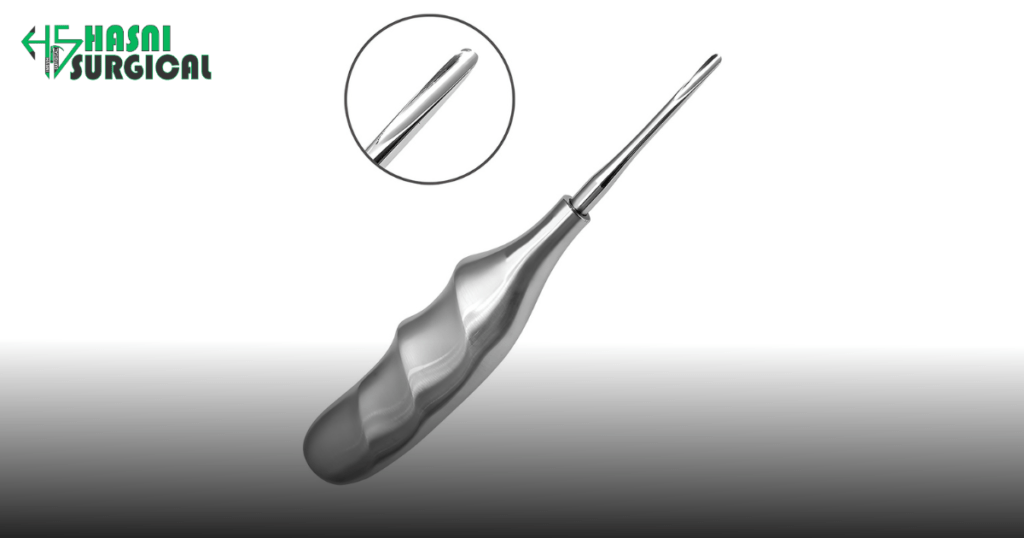
Expanding on the dental mirror
At Hasni Surgical, A dental mirror is a vital tool in a dentist’s toolkit, acting as their eyes inside the mouth. It features a slender handle, usually metal or plastic, with a small, angled round mirror at one end. This design allows for clear visualization of the teeth and gums.
The dental mirror primarily provides a clear view of hard-to-see areas inside the mouth, like back molars and lingual tooth surfaces. It reflects light and redirects sightlines, helping dentists examine these areas precisely.
During routine dental exams, the mirror is essential for identifying oral health issues like cavities, plaque buildup, gum disease, and abnormalities in tooth alignment or structure. Its close-up view of oral tissues enables early detection, leading to prompt intervention and treatment.
In addition to diagnostics, the dental mirror is instrumental in patient education. Dentists often use the mirror to show patients the inside of their mouths, explaining findings and treatment recommendations visually. This hands-on approach enhances patient understanding and engagement, empowering individuals to take an active role in their oral health.
Beyond the dental office, the dental mirror finds utility in various dental procedures and emergencies. During dental cleanings, the mirror helps hygienists visualize and remove plaque and tartar from hard-to-reach areas.
In dental emergencies like tooth trauma or injury, the dental mirror quickly assesses damage, aiding in prompt treatment decisions by providing a clear view of the affected area. This can reduce pain and prevent complications.
Its role extends far beyond mere reflection, making it an essential instrument for dentists and oral health professionals worldwide.
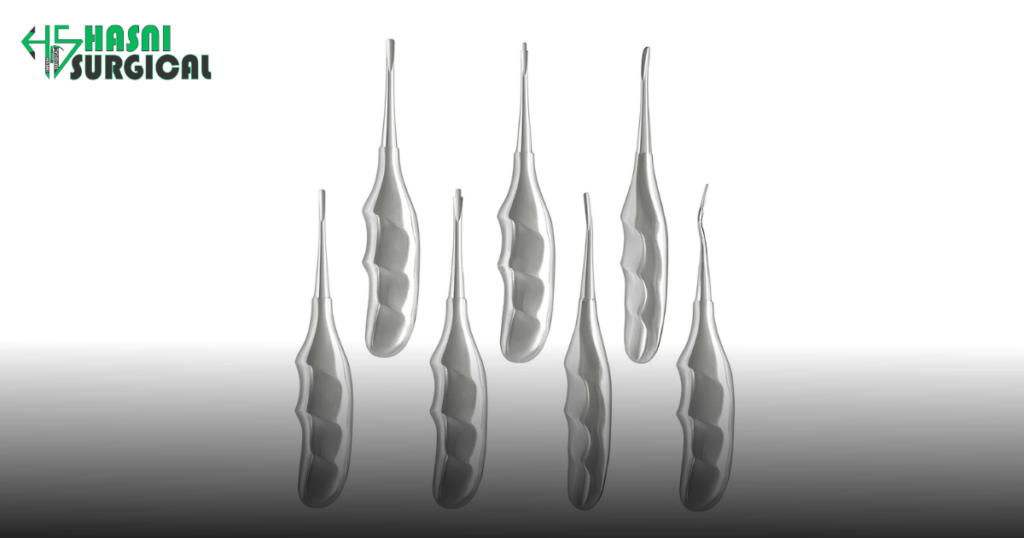
Cotton swabs, also called cotton-tipped applicators or cotton buds, are essential tools in dental emergency and medical kits. They feature a small stick, typically made of wood or plastic, with a soft cotton tip on one or both ends. These versatile instruments are invaluable in providing gentle and precise care in the oral cavity during emergencies.
1. Absorption of Blood and Saliva
During dental emergencies, such as a broken tooth or gum injury, there may be bleeding from the affected area. Cotton swabs are excellent for absorbing blood and saliva, helping to keep the mouth clean, and facilitating better visibility for assessment and treatment.
2. Application of Medication or Antiseptic
In cases of toothache, gum inflammation, or oral infections, applying medication or antiseptic directly to the affected area can provide relief and aid in controlling infection. Cotton swabs allow for precise application of these substances, ensuring they reach the targeted site without causing unnecessary discomfort.
3. Gentle Cleaning
Dental emergencies often involve trauma or damage to the teeth, gums, or surrounding tissues. Cotton swabs gently clean around wounds, removing debris, food, or blood clots effectively. This cleaning action not only promotes oral hygiene but also helps prevent further irritation or infection.
4. Removal of Debris or Foreign Objects
Objects lodged between teeth or stuck in the gums can exacerbate dental emergencies and cause discomfort. Cotton swabs offer a non-invasive way to carefully dislodge and remove debris or foreign objects from the oral cavity, reducing the risk of further injury or infection.
5. Controlled Pressure
Unlike some other instruments, cotton swabs provide a soft and cushioned surface, allowing for controlled pressure when working in sensitive areas of the mouth. This feature is particularly beneficial when dealing with injuries or inflammation, as it minimizes the risk of causing additional trauma to the surrounding tissues.
6. Comfort for Patients
Dental emergencies can be stressful and painful for patients. Using cotton swabs during examination or treatment can help alleviate discomfort and anxiety by providing a gentle touch and reassuring sensation within the mouth.
7. Versatility
Beyond dental emergencies, cotton swabs have numerous applications in oral care, including the application of topical treatments, cleaning orthodontic appliances, and applying dental bonding agents or sealants.
In summary, cotton swabs are essential tools for managing dental emergencies due to their versatility, precision, and gentle yet effective nature. Whether absorbing fluids, applying treatments, cleaning, or removing debris, cotton swabs play a crucial role in providing immediate care and comfort during oral health crises. Responsible use under professional guidance is key to ensuring safe and effective outcomes.
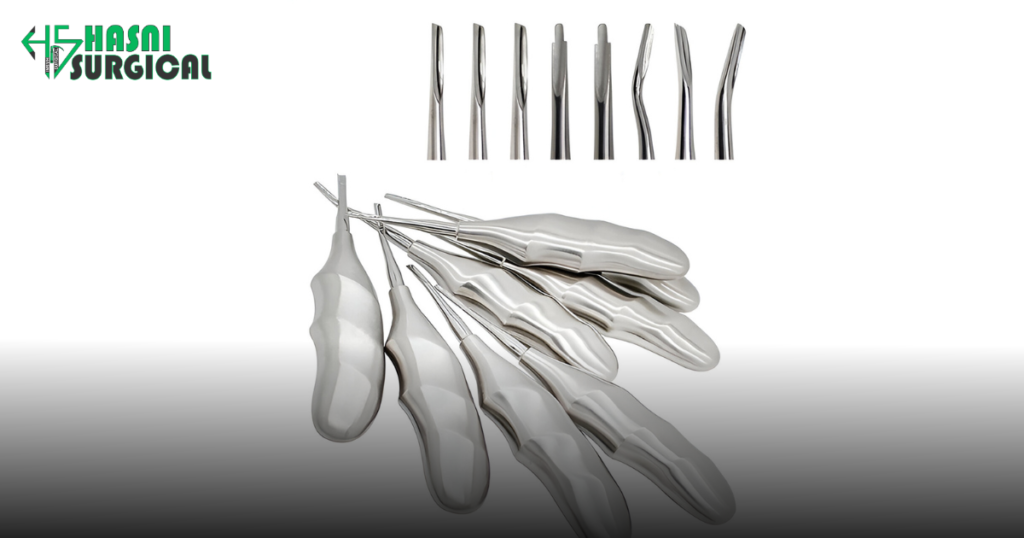
Dental tweezers, also known as cotton forceps or dental pliers, are indispensable instruments in the field of dentistry. They precisely handle small objects in the oral cavity with control and accuracy. Dental tweezers come in various shapes and sizes, each serving a specific purpose in different dental procedures and emergencies.
1. Design and Types
Dental tweezers typically feature fine, pointed tips that allow for delicate manipulation of objects within the mouth. Typically crafted from stainless steel, it ensures durability, corrosion resistance, and easy sterilization. There are several types of dental tweezers, including
Straight tweezers: These tweezers have straight, narrow tips and are suitable for grasping small objects or materials in tight spaces.
Curved tweezers:
Curved tweezers have slightly curved tips, which can provide better access to certain areas of the mouth, particularly around the molars.
Understanding Serrated:
Some dental tweezers come with serrated tips, providing a better grip on objects and reducing the risk of slipping.
2. Applications:
Dental tweezers are versatile tools used in various dental procedures.
- Removal of Foreign Objects: They safely extract foreign objects lodged in teeth or gums to prevent further injury.
- Handling Dental Materials: Essential for precise handling of materials like composite resin or dental cement during procedures such as fillings or crown placements.
- Debris Extraction: They efficiently remove debris like broken tooth fragments or calculus buildup to aid examination and treatment.
- Placement of Dental Dams: Used to secure dental dams for isolating specific teeth or areas during procedures, ensuring clear visibility and access.
3. Safety Considerations:
Dental tweezers are crucial in dental practice but must be handled carefully to avoid patient injury or oral tissue damage. Ensure the tweezers’ tips are aligned and defect-free to prevent harm. Sterilize them before each use to prevent infection spread.
4. Maintenance and sterilization:
Proper maintenance and sterilization of dental tweezers are essential to ensuring their longevity and effectiveness. After each use, tweezers should be thoroughly cleaned to remove any debris or residues. They should then be sterilized using autoclaving, chemical disinfection, or other approved methods to eliminate bacteria, viruses, and other pathogens.
In conclusion, dental tweezers are essential instruments in dentistry, crucial for a variety of procedures and emergencies. Dentists use these precision tools to handle small objects, materials, and debris in the oral cavity with accuracy and control. Understanding their types, applications, and safety considerations allows dental professionals to manage different scenarios effectively, ensuring patient safety and comfort.
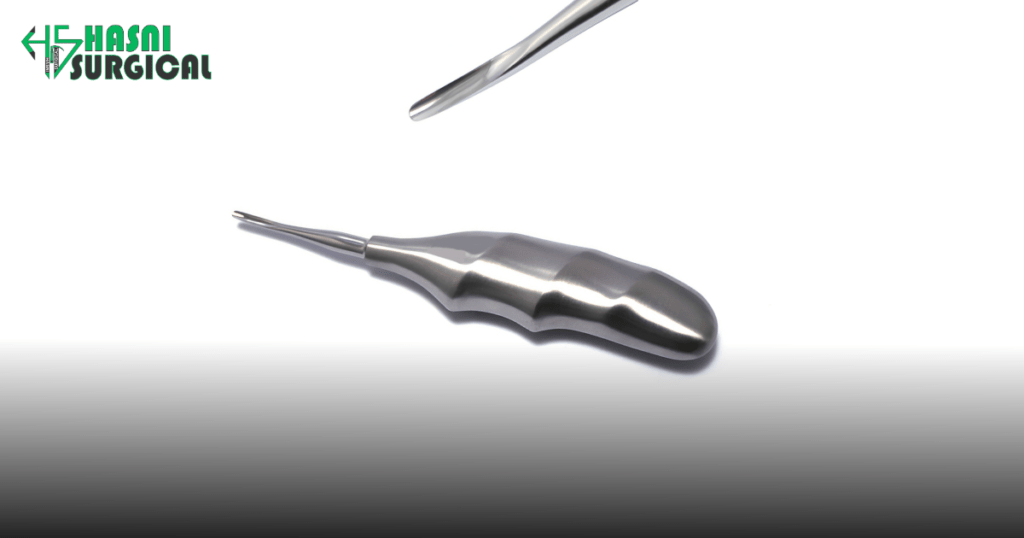
Dental floss is essential for oral hygiene, helping to clean between teeth where toothbrushes can’t reach. Made from nylon or Teflon, it removes plaque, food particles, and debris, maintaining tooth and gum health. While its primary purpose is preventive dental care, dental floss also serves an essential role in managing dental emergencies.
1. Dental floss removes plaque and food particles between teeth and along the gum line, preventing tooth decay and gum disease. By flossing daily, you can effectively disrupt the accumulation of plaque, helping to prevent cavities and periodontal problems.
2. Gum disease, or periodontal disease, is an oral health issue marked by gum inflammation and infection. Regular flossing helps to remove plaque and bacteria from beneath the gum line, where toothbrush bristles can’t reach. Flossing helps prevent gingivitis (early-stage gum disease) and more severe periodontitis by removing harmful substances.
3. Fresh Breath: Food particles trapped between teeth can contribute to bad breath (halitosis). Flossing removes particles and bacteria that cause bad breath and promotes a cleaner mouth overall.
4. Good oral hygiene, including daily flossing, protects teeth from decay and reduces the need for extensive dental treatment.
5. In dental emergencies, like when something gets stuck between teeth or braces, dental floss can gently remove it. Use a sawing motion to maneuver the floss around the object to prevent damage.
In summary, dental floss is an indispensable tool for maintaining oral health and hygiene. Regular flossing prevents tooth decay, gum disease, and bad breath. It’s crucial for managing dental emergencies by safely removing foreign objects and stabilizing injured teeth temporarily. Make flossing part of your daily routine for optimal dental health and a bright smile.
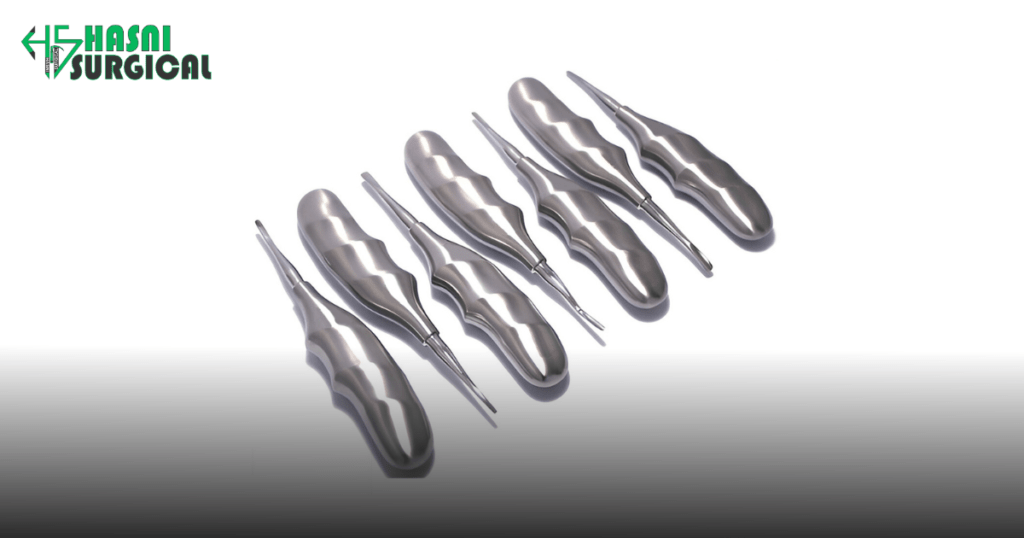
Topical analgesics are medications designed to provide localized pain relief when applied directly to the affected area. In dental emergencies, they can be particularly beneficial in alleviating discomfort while awaiting professional treatment. Here are some key points to consider regarding topical analgesics:
1. Types of Topical Analgesics:
Benzocaine Gel: Benzocaine is a common ingredient in many topical dental anesthetics. It works by temporarily numbing the nerves in the affected area, providing relief from pain and discomfort. Benzocaine gel is often applied directly to the gums or affected tooth using a cotton swab or applicator.
Oral Numbing Sprays: Oral numbing sprays contain local anesthetics such as benzocaine or lidocaine, which temporarily block nerve signals in the mouth, reducing pain sensation. These sprays are sprayed directly onto the affected area for quick relief.
2. Application:
When applying topical analgesics, it’s essential to follow the manufacturer’s instructions carefully. Use the recommended amount and avoid exceeding the recommended dosage to prevent adverse effects.
Ensure that the affected area is clean and dry before applying the topical analgesic. Gently patting the area with a clean cotton swab or gauze can help remove excess moisture or debris.
Use caution when applying topical analgesics to avoid contact with healthy oral tissues, as they can cause temporary numbing or irritation. A direct application to the affected tooth or gum area is recommended.
3. Temporary Relief:
Hasni Surgical Topical Analgesics provide temporary relief from dental pain and discomfort and are not a substitute for professional dental care. They can help manage symptoms while waiting for a dental appointment or during a dental emergency.
It’s important to understand that topical analgesics only mask pain temporarily and do not address the underlying cause of the dental issue. Seeking prompt dental evaluation and treatment is crucial for long-term oral health.
4. Precautions:
Individuals with a known allergy or sensitivity to local anesthetics such as benzocaine or lidocaine should avoid using topical analgesics containing these ingredients.
Pregnant or breastfeeding individuals should consult with their healthcare provider before using topical analgesics, as some ingredients may pose risks to the developing fetus or nursing infant.
If pain persists or worsens after applying topical analgesics, or if there are signs of infection such as swelling, redness, or fever, seek immediate dental attention.
In summary, topical analgesics play a valuable role in providing temporary relief from dental pain and discomfort in emergencies. When used correctly and responsibly, they can help alleviate symptoms and improve comfort levels while waiting for professional dental care. However, they should be viewed as a temporary measure, and individuals should prioritize seeking timely evaluation and treatment from a qualified dentist for comprehensive management of dental issues.
Expanding on the concept of a dental emergency kit adds depth to the preparedness aspect of managing dental emergencies. Here’s an elaboration:
Dental Emergency Kit: A Comprehensive Approach to Preparedness
A dental emergency kit serves as a vital resource in moments of dental distress, offering immediate solutions and comfort until professional care can be sought. Crafting a well-equipped dental emergency kit requires foresight and consideration of potential scenarios, ensuring readiness for a variety of dental mishaps. Let’s delve deeper into the components that comprise an effective dental emergency kit:
1. Gauze Pads:
Gauze pads are indispensable for controlling bleeding in dental emergencies. Whether it’s stemming blood flow from a knocked-out tooth socket or absorbing blood from a laceration inside the mouth, sterile gauze pads provide a clean and absorbent solution. They also aid in applying pressure to wounds, promoting clotting, and facilitating initial wound management.
2. Sterile gloves:
In any emergency situation involving bodily fluids or blood, maintaining hygiene and preventing cross-contamination are paramount. Sterile gloves create a barrier between the responder and the patient’s oral cavity, minimizing the risk of infection transmission. Additionally, gloves ensure the respondent’s safety and uphold professional standards of care.
3. Instant Cold Pack:
An instant cold pack is a valuable asset for managing dental pain and swelling. Applying cold therapy to the affected area can help alleviate discomfort, reduce inflammation, and mitigate swelling associated with dental trauma or injury. Cold packs provide immediate relief and can be instrumental in soothing pain while awaiting professional evaluation.
4. Dental wax:
Dental wax is a versatile tool for temporary relief from orthodontic emergencies or sharp edges caused by broken restorations. It can be applied to orthodontic appliances, such as braces or wires, to prevent irritation and discomfort. Additionally, dental wax can cover the jagged edges of broken fillings or crowns, shielding the soft tissues of the mouth from injury until permanent repairs can be made.
5. Temporary Dental Cement:
Temporary dental cement enables the temporary restoration of damaged teeth or restorations, offering protection and stability until permanent treatment can be administered. Whether it’s a loose crown, a fractured tooth, or a dislodged filling, temporary dental cement provides a quick and effective solution to prevent further damage and alleviate discomfort. It’s important to follow the manufacturer’s instructions and seek professional dental care promptly after using temporary dental cement.
6. Oral Pain Reliever:
Including an oral pain reliever in the dental emergency kit can provide immediate relief from dental pain and discomfort. Over-the-counter medications such as acetaminophen or ibuprofen can help alleviate pain associated with toothaches, dental trauma, or oral injuries. However, it’s essential to use these medications responsibly and adhere to dosage guidelines to avoid adverse effects.
7. Contact Information:
Lastly, but perhaps most importantly, the dental emergency kit should contain contact information for emergency dental services, including the dentist’s office number, after-hours contact information, and nearby emergency dental clinics. In the event of a dental emergency, having access to professional care is crucial for proper diagnosis and treatment.
In summary, a well-prepared dental emergency kit encompasses a range of supplies tailored to address various dental emergencies effectively. By assembling and maintaining a comprehensive kit, individuals can empower themselves to respond confidently and competently to dental crises, ensuring prompt relief and optimal outcomes for oral health emergencies.
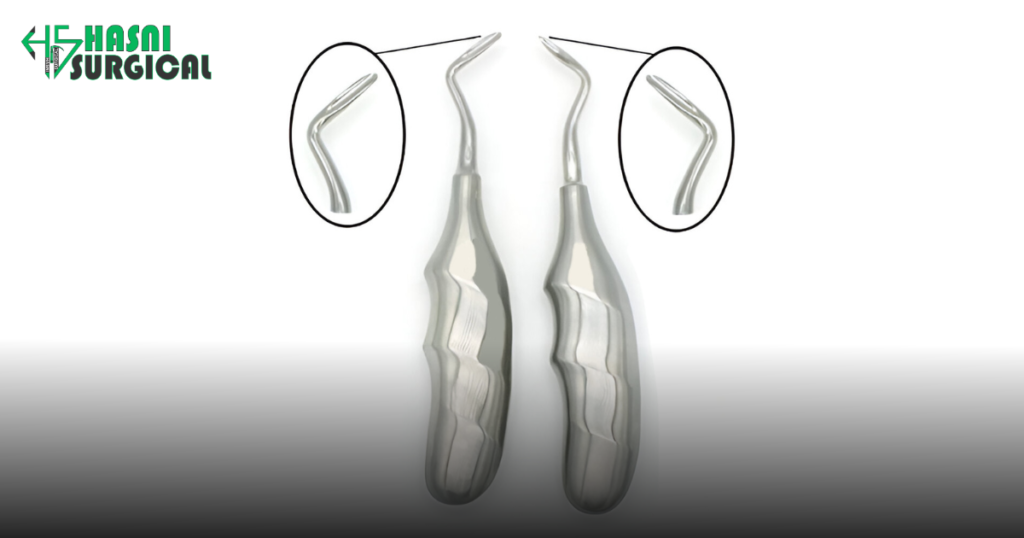
Conclusion:
In moments of dental emergencies, having the right tools readily available can make a significant difference in how effectively and comfortably you can manage the situation. By ensuring you have essential instruments such as dental mirrors, cotton swabs, tweezers, dental floss, topical analgesics, and a dental emergency kit on hand, you are better prepared to respond promptly and confidently.
However, it’s crucial to remember that while these tools can provide temporary relief and aid in initial assessment, they are not substitutes for professional dental care. Dental emergencies should always be followed up with a visit to your dentist or emergency dental services as soon as possible. Prompt professional evaluation is essential for accurate diagnosis and appropriate treatment to address the underlying issue and prevent further complications.
In addition to having the right tools, being knowledgeable about basic first-aid techniques for dental emergencies can also be invaluable. Knowing how to handle common situations like toothaches, knocked-out teeth, or broken restorations can help minimize pain and reduce the risk of further damage until you can reach a dental professional.
Ultimately, being prepared and informed empowers you to navigate dental emergencies with confidence and composure. By taking proactive steps to equip yourself with essential instruments and knowledge, you can better protect your oral health and well-being, ensuring that you’re ready to face any unexpected dental challenges that may arise.


Comment (1)
clip downloader
Somebody essentially lend a hand to make significantly posts I might state That is the very first time I frequented your web page and up to now I surprised with the research you made to create this particular put up amazing Excellent job